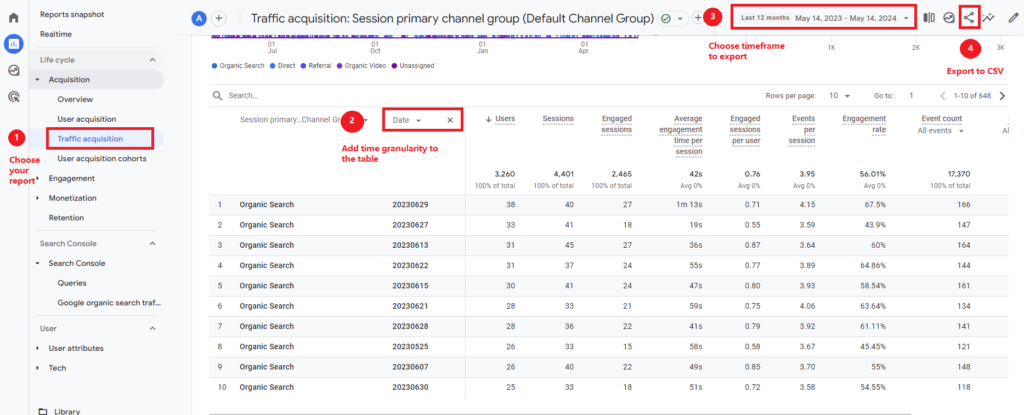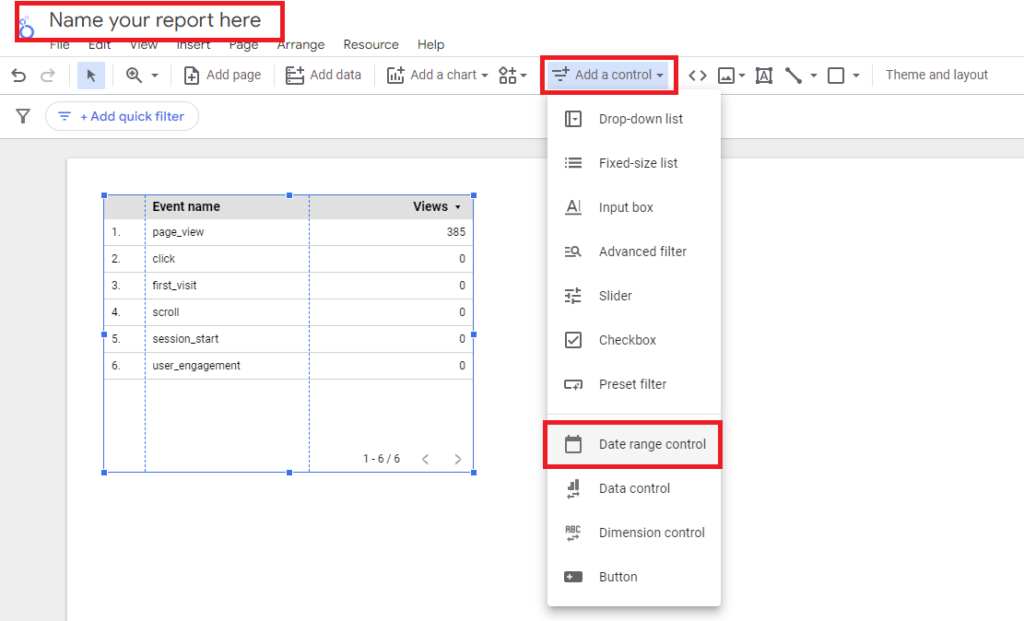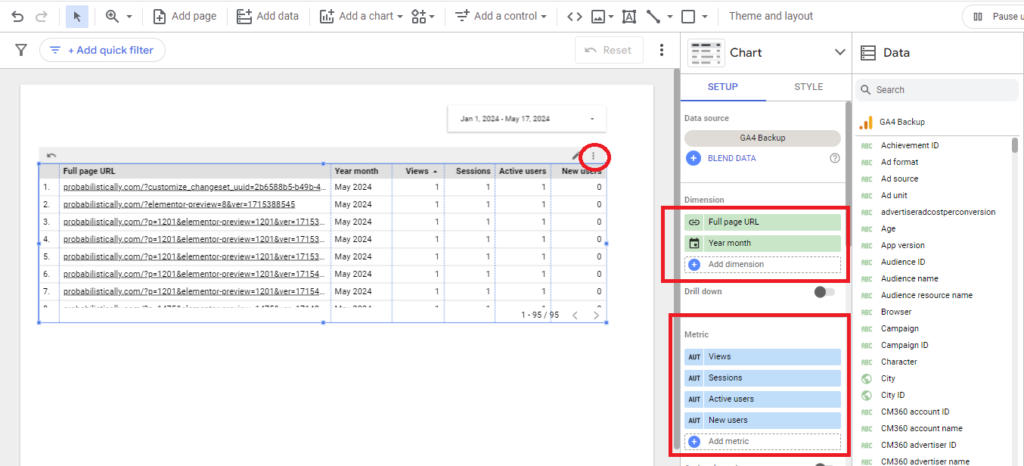4 Ways to Export Google Analytics Data History
According to Google data retention policy, standard GA4 properties keep 14 months of history. In real life, I have seen that period extended to 24 months.
You are probably here because you opened Google Analytics reports and realized that that your web traffic history beyond 24 is gone.
I am here to explain four ways to export your Google Analytics history for future use. I will sort them in the order of increased effort and technical difficulty, from the easiest to the most challenging.
1. Google Analytics Interface Manual Export
If you are using Google Analytics website to look at your data, you can export the history from the report page.
- Go to your favorite report. You will be able to export the table on the bottom, not the data in the charts.
- In most cases, it makes sense to add a time breakdown variable, like month or day.
- Choose your extended date range.
- Export the data into CSV file.

2. Looker Studio Manual Export
Just like with the Google Analytics website, you can create reports containing historical data and export them to CSV from Looker Studio.
- Log onto Looker Studio.
- Click on Create in the upper left corner, choose Data source.
- Choose Google Analytics, then your Account and Property. Click Connect.
- You are on the Data set connection screen. It’s a good place to rename your Data set, Edit connection, Add a Field or Parameter.
- Click on Create Report.
- A blank report will appear with a sample table. Name your report and add a Date range control. Choose your date range.

- Highlight or insert a table and drag your preferred metrics and dimensions from the Data tab to create a report. Don’t forget about a date dimension.
- Click on the three dots in the header of the table to export data.

3. Google Analytics Data API Export
Google Analytics Data API is a great way to produce large Google Analytics tables with various levels of summarization covering multiple periods. It is also used to backfill GA4 BigQuery export, which is #4 on my list of Google Analytics exports.
I wrote a detailed article about backfilling GA4 data in BigQuery.
However, interfacing with the API it requires more technical knowledge than either UI or Looker Studio export.
This is a video tutorial that explains how to use the GA4 python API.
4. BigQuery Data Export
BigQuery export of GA4 data is different from the other three methods in two ways:
- It saves all event-level raw data, not just summaries.
- You can’t go back in time. BigQuery export works “from the date it was enabled on.” So, start exporting today, and in two years you will have most detailed historical GA4 data available.
To set up the export, you will need a Google Cloud Platform project with billing turned on. It’s most likely that you won’t incur charges for the simple export and storage of the data. Refer to my article describing GA4 BigQuery cost for more information.
Follow Google’s instructions on how to enable the export in your Google Analytics IU.
BigQuery GA4 data can be tricky, so read my advantages and disadvantages guide before building your own historical reports from BigQuery GA4 export. Best of luck!

by Tanya Zyabkina
Tanya Zyabkina has over 15 years of experience leading analytics functions for multiple Fortune 500 companies in the retail, telecom, and higher education. She works as the Director of Marketing Performance Analytics for the The Ohio State University. Go Bucks!
